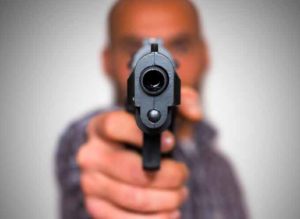 Reports of active shooters have made their way into the nightly news feeds for years. However, since the lockdowns imposed in 2020 due to the coronavirus epidemic, the number of reported active shooting situations has been dramatically rising.
Reports of active shooters have made their way into the nightly news feeds for years. However, since the lockdowns imposed in 2020 due to the coronavirus epidemic, the number of reported active shooting situations has been dramatically rising.We are all now living in a day and age when we leave our house, it would be in the best interest of ourselves and our loved ones that we stay alert and be prepared in case an active shooter situation should evolve.
To this end, the US Department of Homeland Security, DHS, has compiled a list of steps that will allow you to be prepared if such a situation arises. Find the steps laid out below, along with what could be additional life-saving information as well.
Active Shooter
The definition of an active shooter, as stated by DHS and law enforcement personnel, is an individual actively engaging in an act to kill or attempting to kill people located in a populated or confined area. An active shooter's choice of weapon is a firearm, and when investigated, their victim selection is random and without any due process or pattern involved.
An active shooter situation can begin playing out quite quickly, with the resulting deployment of law enforcement personnel to curb any possible harm to the surrounding victim and stop the shooter if possible, and often at all costs.
Data has shown, with some exceptions, that an active shooter situation will begin and end within a 10-15 minutes time frame, well before law enforcement arrives at the scene. Those individuals involved must be prepared to deal with the situation, both physically and mentally.
Responding To Active Shooter Situation
There are three words to remember in an active shooter situation – Evacuate, Hide, and Fight. The vital first step is to analyze the situation and determine the best method of protecting your life and those lives around you and come out of it with minimal loss of life. If the event occurs in your place of employment, vital to remember is that your customers and employees will follow the lead of their managers, so they must know what to do.
- Evacuate
If at all possible, when you realize that there is an active shooter situation, determine if there is a safe and speedy path of escape. Have a preplanned escape route; even if others do not agree, proceed to evacuate. Help others along the path, and don't worry about your belongings. Leave them behind. Do not attempt to evacuate with wounded individuals, and when you are in a safe and secure location, call 911.
- Hide
If evacuation is not a viable option, a secure place to hide out where the shooter will be least likely to find you. You should choose a place that puts you outside the shooter's view and provides physical protection even if that shooter fires in your general direction. Do not hide where you will only end up trapping yourself or restricting your ability to move about. If possible, find a room with a door that has a lock. Lock and, if possible, barricade the door.
- Fight
If at any time during the situation you feel that you are in imminent danger of your life, attempt to take down and incapacitate the shooter as an absolute last resort. You can achieve this by engaging with the shooter as aggressively as possible. You can also improvise weapons, or in place of this, you use items around you and throw them at the shooter. Yelling extremely loud can prove to be a temporary diversion and could give you an opening to make your move. Once you attempt to incapacitate the shooter, stay committed to your choice and your actions.
At some point during the situation, law enforcement personnel will arrive. They will be trained for a situation such as this and proceed to take the active shooter down as soon as possible. Essential to know at this point:
- Law enforcement will usually arrive on the scene in groups of four
- The officers will be wearing tactical gear, such as bulletproof vests and possibly Kevlar helmets
- The officers will be armed with firearms that include any or of rifles, handguns, and shotguns
- In an attempt to try to gain control of the situation, law enforcement may use tear gas or pepper spray
- For the safety of you and them, follow any instructions that the officers give you
If at some point in the active shooting situation, before law enforcement has arrived, if you can call 911, make sure to have the following information at hand and ready to relay if possible:
- The active shooter's location, to the best of your knowledge at the time of the call
- If there appears to be more than one shooter, relay their location if possible as well
- Give law enforcement as detailed of a description of the shooter(s) as possible
- Try to forward any information on the type of weapons the shooter is using and how many
- If you know of any shot or wounded, also make sure to forward this information
Global Security Group, Inc. (GSG) was founded in 2001 shortly after attacks of 9/11 with a clear mission; use the knowledge, training and experience of our team of former US Federal Agents and senior officers from the Police and Fire Departments of the City of New York to meet the security and life safety needs of the private sector. Feel free to reach out to us for a consultation on your security needs.


About The Author: Developer Developer
More posts by Developer Developer